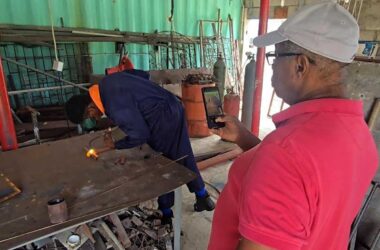The Water and Sewerage Company (WASCO) is calling on Saint Lucians to safeguard the island’s water resources in the face of a looming drought threat.
The water company said that together, citizens can adopt effective adaptation strategies to tackle this pressing issue.
WASCO, in a recent interactive workshop was clear that “we must conserve water now more than ever.”
The alarming rise in greenhouse gas emissions is not just a global crisis; it continues to wreak havoc on the island’s local climate. These emissions trap the sun’s heat, leading to longer droughts and extreme weather patterns that endanger the country’s water supply.
Particularly concerning is the condition of WASCO’s Roseau dam, the island’s largest water reservoir, which highlights the stark realities of climate change. This critical resource, responsible for supplying the northern region of Saint Lucia, is under tight surveillance as the impending water crisis looms.
Currently, the water level at the dam stands at 317.6 feet, which is lower than the optimal capacity needed to meet the population’s demands. A WASCO technician stated, “If we don’t change our approach, we risk losing about 6 inches of water capacity. We’re not sustaining our production levels.”
He said that to adequately serve the population, WASCO needs to provide between 8.5 to 10 million gallons daily, but right now, they are only supplying about 65% of the required amount.
WASCO reminds its clientele that as a nation, citizens hold the power and responsibility to protect homes, livelihoods, and heritage from the undeniable impacts of climate change, noting that, “We must embrace adaptation to build our climate resilience.”
Building climate resilience entails a comprehensive assessment of risks and actionable steps to mitigate them. So, what is Saint Lucia doing to enhance its climate resilience?
“Saint Lucia is committed to strengthening its climate resilience through a multi-faceted approach,” a WASCO team member explained. This includes policy initiatives, legislative reforms, raising awareness, and bolstering community capacity.
Additionally, tangible, on-the-ground actions are being identified to directly combat climate change. Central to these efforts is the National Adaptation Plan (NAP), a forward-looking strategy extending from 2018 to 2028.
This key initiative is designed to bolster the island’s resilience and guide the implementation of Saint Lucia’s Climate Change Adaptation Policy. The NAP delineates eight priority sectors for Adaptation Action and is complemented by Sectoral Adaptation Strategies and Action Plan Strategies (SASAPS).
These frameworks provide a roadmap for action across various sectors, including water management, agriculture, fisheries, ecosystems, infrastructure, health, education, and tourism. The SASAPS framework outlines immediate to long-term measures to address current and future climate challenges.
One vital focus area is the preservation of Saint Lucia’s coral reefs, which serve as critical habitats for marine life and help protect the coastlines against erosion as they thrive.
Climate Adaptation is about taking deliberate steps to respond to inevitable climate changes. Beginning with simple actions can make a significant difference—like planting a tree, which enhances the environment by providing shade, and food, and supporting the island’s forest ecosystems.
“We can adapt to these changes by planting trees and managing our existing flora and fauna responsibly,” WASCO emphasized.
By nurturing the island’s biodiversity, citizens can significantly enhance their resilience against climate disruption.
WASCO’s Chief Operations Officer, Aly Anthony, has highlighted the essential ongoing assessments being conducted. He urged that the “deteriorating old infrastructure” must be urgently replaced to prevent further water loss.
He highlighted the detrimental impact of heavy-duty vehicles on these aging pipelines, which leads to leaks that compromise the water supply.













